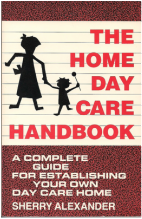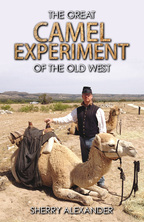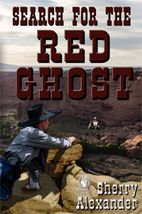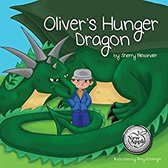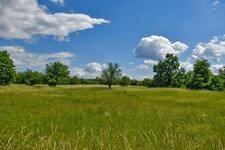 Photo by Adonyi-Gabor/Unsplash
Photo by Adonyi-Gabor/Unsplash Walt Whitman’s poem, “A Child Said, What is Grass”, uses figurative, connotative and technical words and phrases such as a flag, death, uncut hair, and a child to refine the meanings of key terms such as grass and the phrase, “the smallest sprout shows there is really no death” throughout the poem. Whitman writes in a free-form style that follows his thoughts as he tries to answer a child’s question through phrases such as “I guess” and “It may be” which contribute to the overall structure and meaning that becomes more of a prayer or chant than a poem as it delivers an aesthetic impact on the beauty that lies in the connection between life and death as well as racial equality.
The very beginning of Whitman’s poem starts with the title question “A Child said, What is the grass?” Whitman makes it clear that he has no idea how to answer the question at the start, and that begins his examination of the possibilities as they float through his mind. His words create a picture of grass. It’s not just a green carpet nature laid over the soil, but something much more. It knows no boundaries, it has a beginning, and it’s a never-ending story of both nature and the life cycle. All of this is written free-form, which contributes to the overall structure and meaning through his choice of words that help the reader to imagine grass from different perspectives. Every word and phrase that Whitman chooses to use not only adds to the aesthetic impact, but are refined to create the answer to the meaning of grass, not for the child who asked, but for Whitman himself.
In his use of figurative words, the poet drew on specific words that invoked different meanings to the word grass. Each metaphor, connotative, and technical word Whitman chose refines the connection of grass to nature and the cycle of life. He specifically uses imagery, symbolism, metaphors, and personification. He chooses words such as: “flag” (Whitman 3) which is a symbol of war, pride, a feeling , or a country; a “handkerchief” (Whitman 4) which is used to cover the mouth in a dust storm or even a loaf of bread on a kitchen counter; and “a child” (Whitman 7) which represents youth, inexperience, or a newness. All of these words make an image in the reader’s mind and are included to create that picture through metaphors and symbolism. Another part of figurative language Whitman uses to develop his idea of grass is personification. Grass as a child is personification giving the object human qualities such as innocence, youth, and growth. A connotative example is his use of “uncut hair” (Whitman 12). Grass is not uncut hair in the literal sense but it does create an image of the nature of grass which continues to grow unless cut. Not all of Whitman’s chosen words are figurative or connotative, some are also technical, or true, such as his choice of “to die” (Whitman 32) and “Hieroglyphic” (Whitman 8). Alone, the two words truly mean the end of life and a type of lettering, but he uses them symbolically within a phrase to provide a different meaning. Whitman was a poet, and the words he selected throughout this poem add another dimension to the word “grass”, and portray it as much more than the green vegetation that grows on lawns.
In the same way Whitman chooses specific words, he combines them to craft phrases that help identify grass by refining the alternative meaning. For example, “The beautiful uncut hair of graves” (Whitman 12) and “The smallest sprout shows there is really no death” (Whitman 28) both provide a new effect to his word choices as he defines it as more than just another type of vegetation. They show that it is also part of the cycle of life, people die and their bodies feed the grass, the grass starts as a small sprout and grows into a blade. In one of the more important uses of a phrase to make the reader stop and think, Whitman emphasizes that grass grows everywhere, and knows nothing of racism. He says it is “Growing among black folks as among white” (Whitman 10). Grass is not racial, and explaining it this way makes the reader understand that people shouldn’t be either. Racism separates people, and since Whitman wrote this after the Civil War, his comparison of how grass knows no boundaries, or no racism, seemed right for then and now. It’s not just the poet’s figurative words and phrases that help develop the answer to the child’s question, but it is also the way he structures his poem.
In contrast to poems that have a rhyming structure, Whitman’s poem is more like a man thinking about a question a child raises that he doesn’t know how to answer. The overall structure is in free verse. The definition per Literary Devices of free verse is: “A literary device that . . . is free from limitations of regular meter or rhythm, and does not rhyme with fixed forms. In this way, the poet can give his own shape to a poem however he or she desires.” The phrases Whitman contributes to the overall structure are like a chant that repeats it over and over with word phrases such as “I guess. . .” (Whitman 3,4,7,8), “And it means. . .” (Whitman 9), “And it may be. . .” (Whitman 14-16), and also “And now it seems to me . . .” (Whitman 12). These phrases are connected to other ideas or notions so they continue his stream of thought shared in free verse. The structure he uses adds meaning because the poet shares his feelings and his emotions with phrases such as “I wish I could translate the hints….” (Whitman 23). The use of emotion and symbols within the structure of free verse creates an aesthetic impact, and they also help the reader to see that grass is not only artistically beautiful but can stand for something else.
In conclusion, Walt Whitman’s poem, “A Child Said, What is Grass”, uses figurative, connotative. and technical words and phrases such as a flag, death, uncut hair, and a child to refine the meanings of key terms such as grass and the phrase, “the smallest sprout shows there is really no death” throughout the poem. He writes in a free-form style that follows his thoughts as he tries to answer a child’s question by using phrases such as “I guess” and “It may be” which contribute to the overall structure and meaning as more of a prayer or chant while it delivers an aesthetic impact on the beauty that lies in the connection between life and death as well as racial equality. It is Whitman’s way of saying that death and life may have a different meaning than most people think, and that meaning may be in the lack of boundaries found in the vegetation known as grass.
The very beginning of Whitman’s poem starts with the title question “A Child said, What is the grass?” Whitman makes it clear that he has no idea how to answer the question at the start, and that begins his examination of the possibilities as they float through his mind. His words create a picture of grass. It’s not just a green carpet nature laid over the soil, but something much more. It knows no boundaries, it has a beginning, and it’s a never-ending story of both nature and the life cycle. All of this is written free-form, which contributes to the overall structure and meaning through his choice of words that help the reader to imagine grass from different perspectives. Every word and phrase that Whitman chooses to use not only adds to the aesthetic impact, but are refined to create the answer to the meaning of grass, not for the child who asked, but for Whitman himself.
In his use of figurative words, the poet drew on specific words that invoked different meanings to the word grass. Each metaphor, connotative, and technical word Whitman chose refines the connection of grass to nature and the cycle of life. He specifically uses imagery, symbolism, metaphors, and personification. He chooses words such as: “flag” (Whitman 3) which is a symbol of war, pride, a feeling , or a country; a “handkerchief” (Whitman 4) which is used to cover the mouth in a dust storm or even a loaf of bread on a kitchen counter; and “a child” (Whitman 7) which represents youth, inexperience, or a newness. All of these words make an image in the reader’s mind and are included to create that picture through metaphors and symbolism. Another part of figurative language Whitman uses to develop his idea of grass is personification. Grass as a child is personification giving the object human qualities such as innocence, youth, and growth. A connotative example is his use of “uncut hair” (Whitman 12). Grass is not uncut hair in the literal sense but it does create an image of the nature of grass which continues to grow unless cut. Not all of Whitman’s chosen words are figurative or connotative, some are also technical, or true, such as his choice of “to die” (Whitman 32) and “Hieroglyphic” (Whitman 8). Alone, the two words truly mean the end of life and a type of lettering, but he uses them symbolically within a phrase to provide a different meaning. Whitman was a poet, and the words he selected throughout this poem add another dimension to the word “grass”, and portray it as much more than the green vegetation that grows on lawns.
In the same way Whitman chooses specific words, he combines them to craft phrases that help identify grass by refining the alternative meaning. For example, “The beautiful uncut hair of graves” (Whitman 12) and “The smallest sprout shows there is really no death” (Whitman 28) both provide a new effect to his word choices as he defines it as more than just another type of vegetation. They show that it is also part of the cycle of life, people die and their bodies feed the grass, the grass starts as a small sprout and grows into a blade. In one of the more important uses of a phrase to make the reader stop and think, Whitman emphasizes that grass grows everywhere, and knows nothing of racism. He says it is “Growing among black folks as among white” (Whitman 10). Grass is not racial, and explaining it this way makes the reader understand that people shouldn’t be either. Racism separates people, and since Whitman wrote this after the Civil War, his comparison of how grass knows no boundaries, or no racism, seemed right for then and now. It’s not just the poet’s figurative words and phrases that help develop the answer to the child’s question, but it is also the way he structures his poem.
In contrast to poems that have a rhyming structure, Whitman’s poem is more like a man thinking about a question a child raises that he doesn’t know how to answer. The overall structure is in free verse. The definition per Literary Devices of free verse is: “A literary device that . . . is free from limitations of regular meter or rhythm, and does not rhyme with fixed forms. In this way, the poet can give his own shape to a poem however he or she desires.” The phrases Whitman contributes to the overall structure are like a chant that repeats it over and over with word phrases such as “I guess. . .” (Whitman 3,4,7,8), “And it means. . .” (Whitman 9), “And it may be. . .” (Whitman 14-16), and also “And now it seems to me . . .” (Whitman 12). These phrases are connected to other ideas or notions so they continue his stream of thought shared in free verse. The structure he uses adds meaning because the poet shares his feelings and his emotions with phrases such as “I wish I could translate the hints….” (Whitman 23). The use of emotion and symbols within the structure of free verse creates an aesthetic impact, and they also help the reader to see that grass is not only artistically beautiful but can stand for something else.
In conclusion, Walt Whitman’s poem, “A Child Said, What is Grass”, uses figurative, connotative. and technical words and phrases such as a flag, death, uncut hair, and a child to refine the meanings of key terms such as grass and the phrase, “the smallest sprout shows there is really no death” throughout the poem. He writes in a free-form style that follows his thoughts as he tries to answer a child’s question by using phrases such as “I guess” and “It may be” which contribute to the overall structure and meaning as more of a prayer or chant while it delivers an aesthetic impact on the beauty that lies in the connection between life and death as well as racial equality. It is Whitman’s way of saying that death and life may have a different meaning than most people think, and that meaning may be in the lack of boundaries found in the vegetation known as grass.
 RSS Feed
RSS Feed
